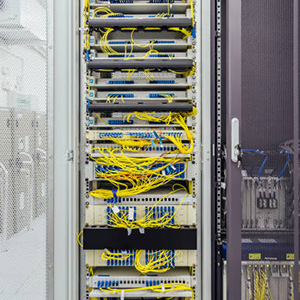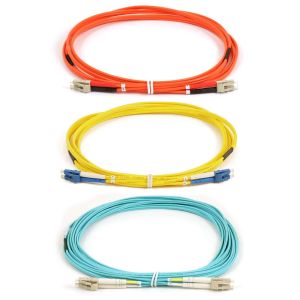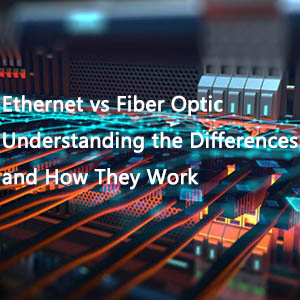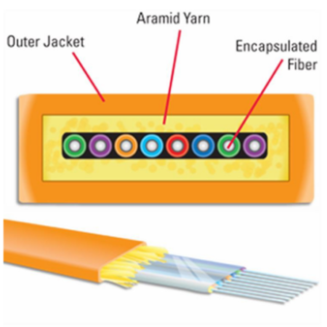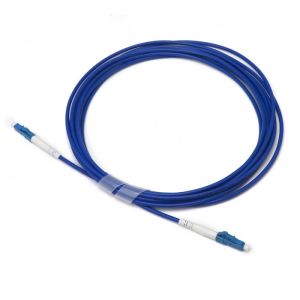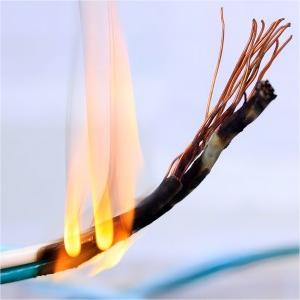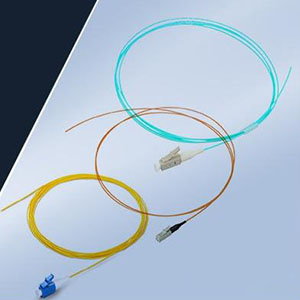High-end optical fibers play a key role in modern networks, but they are much more complex than older fiber optics. If you need superior performance from optical fiber, an MPO system may be your best choice. MPO systems are capable of the fastest speeds currently on the market, but their use requires a certain level of expertise. One key piece of knowledge to master with an MPO system is polarity. Without this knowledge, you won’t be able to properly establish any connection.
What is MPO?
Multi-fiber push on cables are pre-terminated cables that are designed for very high bandwidth. They start at 12-fiber cables that communicate at 10 Gbps. More advanced MPO cables utilize 24-fiber design and can achieve 40/100 Gbps connections. MPO cables are designed for plug and play, they are compact and they are extremely common in data centers. The massive increase in internet capacity over the last decade has involved the use of MPO systems all over the place.
What is Polarity?
When it comes to using MPO systems, an issue of polarity arises. Generally speaking, polarity refers to the direction of flow. If you think about magnets, the polarity of the magnet tells you which way the field flows, and that tells you the direction of attraction or repulsion you would get with another magnet. It also determines the direction of an induced electric current, but let’s not wander too far into the weeds.
In fiber optics, the polarity refers to the flow of information. In a simple duplex system, information flows from a transmitter (TX) to a receiver (Rx). Since a duplex system has fiber pairs, there are two possible ways to line up the Tx and Rx pair. Only one will work. The standard is that the A strand of one side needs to align with the B strand of the other side. If you match A-A, then no communication occurs. This is the basic idea of fiber polarity.
When you’re utilizing 12- or 24-strand MPO systems, polarity gets a lot more common. That’s why we refer to a standardized methodology to assure proper polarity.
3 MPO Cable Types
Before we get into the methods, it’s necessary to understand the three primary types of MPO cables: Type A, Type B and Type C. Each cable has a unique design element that defines polarity in the system.
Type A MPO
Type A cables are also known as straight cables. They are the simplest MPO cables to understand. Each cable is sequenced 1-12. Since the cable is straight, the 1 node on each end is in the same spot relative to the sequence. The same is true for each of the fiber lines. But, if you recall the basic polarity example, this means that a Type A MPO cable cannot connect Tx to Rx without something to fix the polarity. We’ll cover that in a minute.
Type B MPO
Type B cables are known as reversed cables. They’re still pretty simple. Whereas Type A cables run in a straight line and the 1 node matches the 1 node on the other end, Type B reverses this. So, you’ll have 1-12 on one end and 12-1 on the other end. That means that a Type B cable can connect Tx to Rx without additional equipment.
Type C MPO
Also known as pairs flipped cables, these are the most complicated of the three. In Type C, each pair of strands is flipped along the run of the cable. That means 1 and 2 swap places, 3 and 4 swap places and so on. You can see why this type of cable requires a little extra though to use effectively.
Types of MPO Connectivity Methods
Now that we have some basics covered, we can talk about ensuring matching polarity in the MPO systems. The methods utilize fiber patch cables. A standard patch cable is known as an A-B cable. It’s a straight cable where AB is on one end and BA is on the other. Conversely, an A-A patch cable does not have this alignment, and it can be used to flip the positions on one side of an MPO connection.
Method A
As you guessed from the name, this method is used for aligning Type A cables. Since the straight cables don’t achieve proper alignment on their own, you need to mix and match your two kinds of patch cables. With an A-B patch on one end and an A-A on the other end, you’ll get proper polarity and everything works. The tricky part is ensuring that you are getting male-female matches across the board. As long as you remember to use one of each patch cable, the limit combinations are easy enough to handle.
Method B
Aligning Type B cables is the easy part of all of this. They don’t require any extra flipping, so use an A-B patch cable at each end.
Method C
Type C cables are interesting. With a 12-strand cable, you can simply use an A-B patch on each end and your polarity is fine. The pair crossing built into the cable takes care of the problem. However, when you upgrade to 24-pair cables, things get exponentially more complicated, and standard patch cables no longer suffice.
40/100 Gig Applications for MPO
So far, we’ve discussed polarity methods for 12-fiber cables. Applications that need 24-fiber cables are clearly more complicated. Because position matching has so many options, there isn’t a clear standard to follow. Instead, we can simplify 24-fiber designs with a simplified rule. Stick with Type A cables and use a Type AF cassette. With this cassette, you won’t need the A-A patch cable and things are as simple as possible.
That said, you still need to meticulously check the alignment pins with the cassette to ensure the positions match accordingly. Another rule to help with this is to stick with female cassettes and male-to-male trunk cables. This forces you to employ female-to-female patch cords, and they’re better for avoiding transceiver damage.
Last
Fiber polarity is a simple concept, but it is very complex in practice. These rules can simplify things and help you save time and reduce stress when installing and using MPO systems. Once you understand polarity, you will be able to take full advantage of today’s most advanced network technologies.If you want to know more about the common uses of MTP®/MPO Fiber Optic Cables, please read:MTP®/MPO Fiber Optic Cables: What Are the Common Uses?


